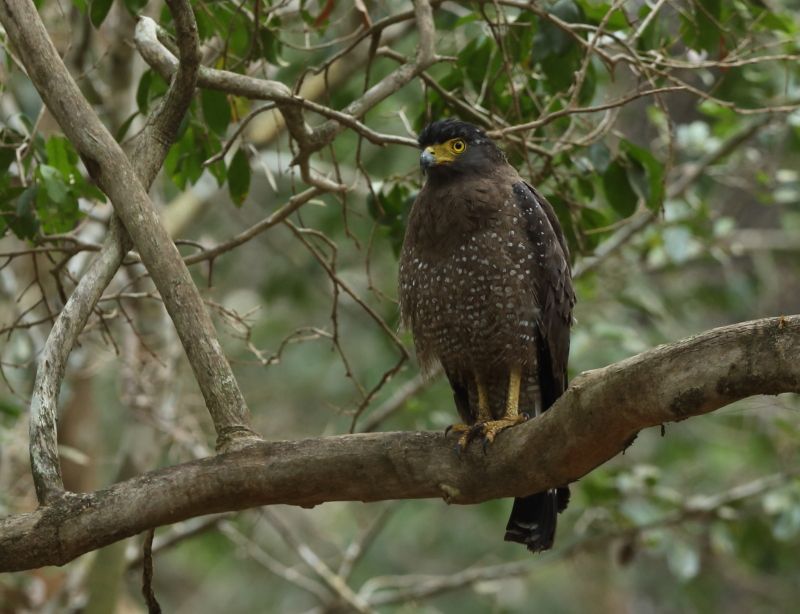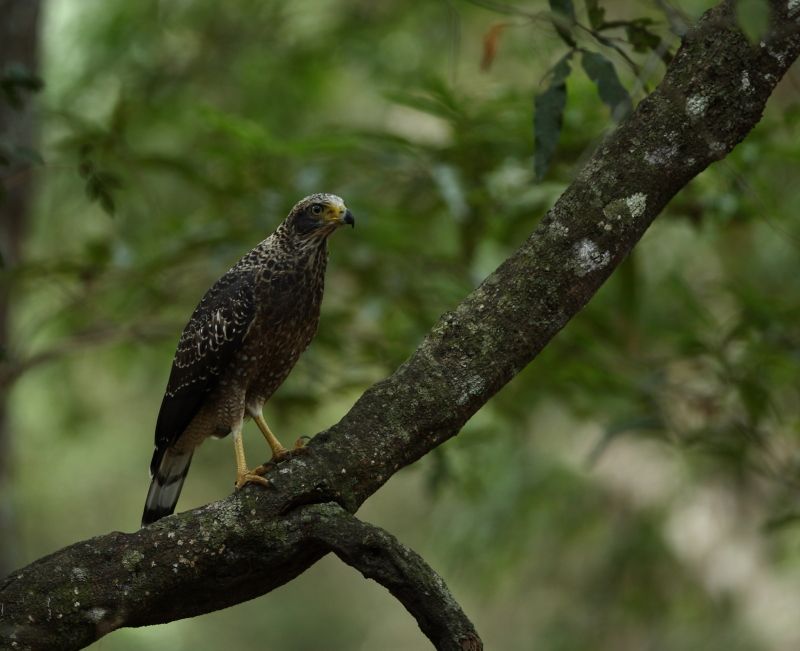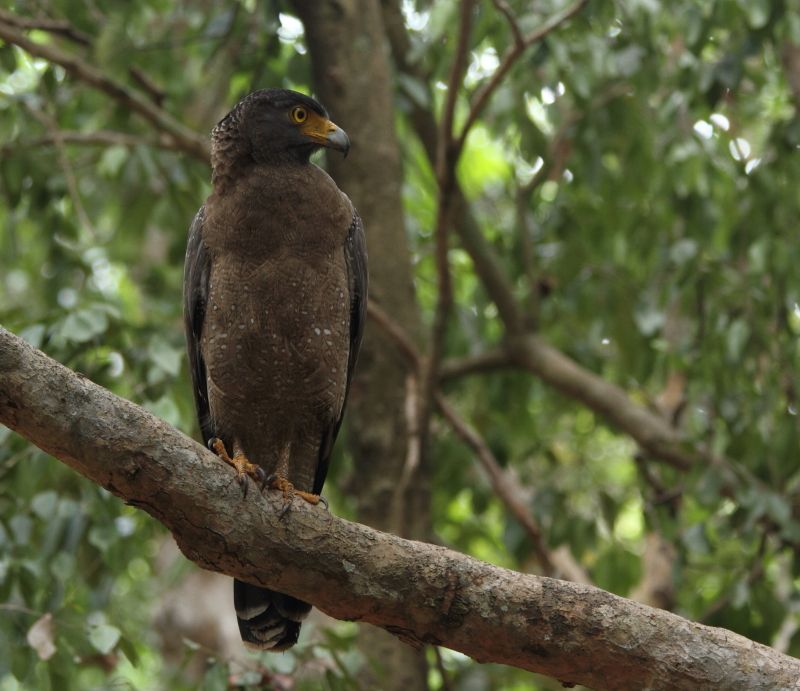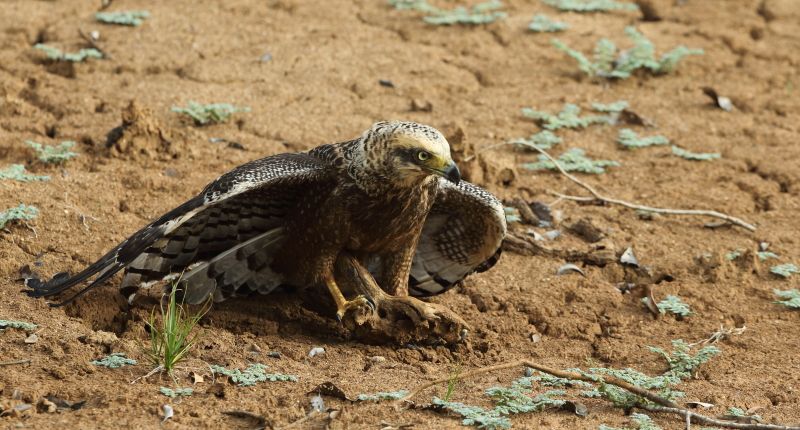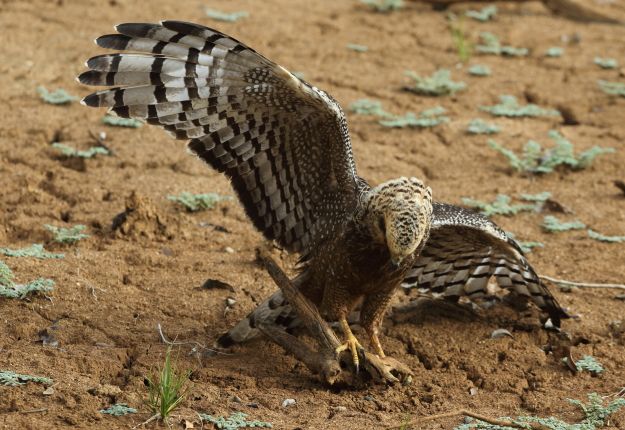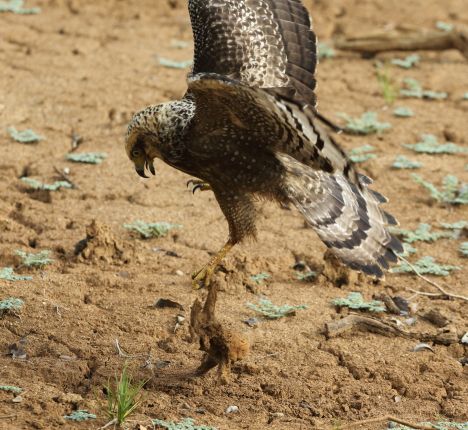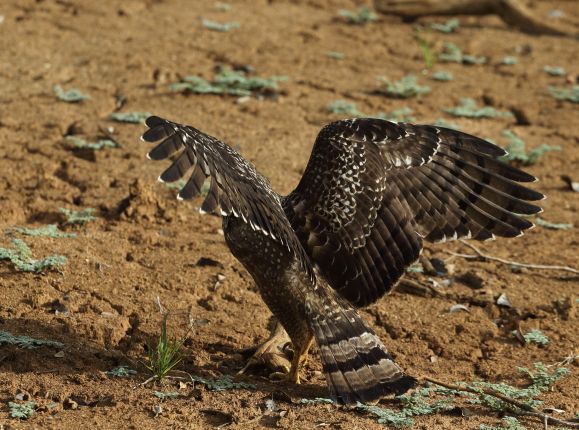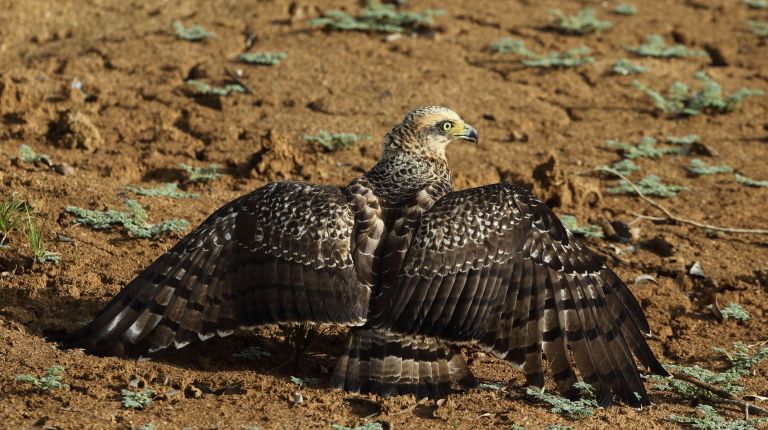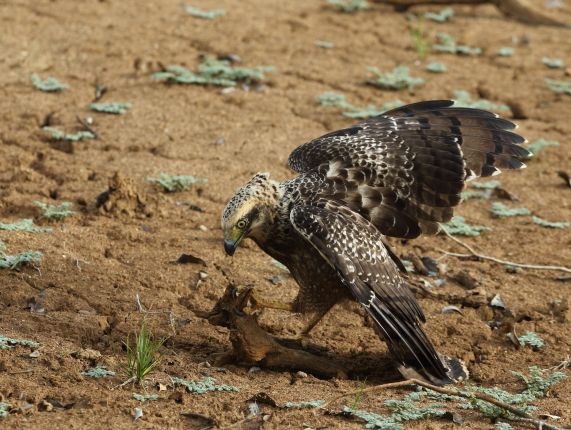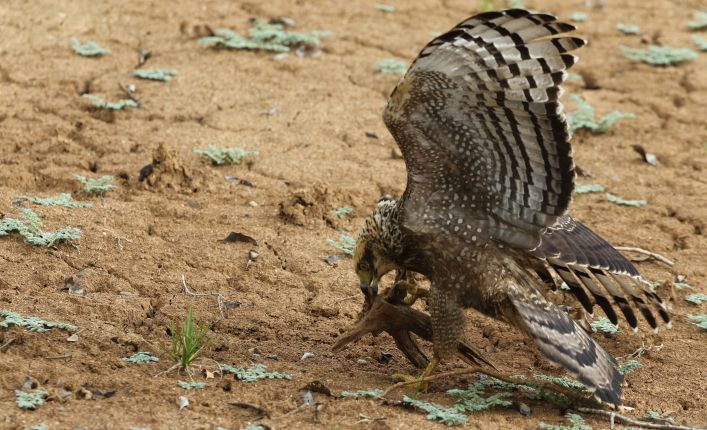
Birds ‹‹ Go Back
This is a common breeding resident found throughout the country. There are 21 subspecies that has been recognized of this eagle, which is wide spread in tropical Asia. The subspecies found in Sri Lanka is S. c. spilogaster, which is endemic to the country.
The conservation status of this species is regarded as Least Concerned (National Red List 2012).
Crested Serpent Eagle is a species protected under the Fauna and Flora Protection Ordinance as amended by Act No. 22 of 2009.
I have observed this species to be common throughout the lowlands up to the highest mountains during my field trips. It is also found in the Jaffna Peninsula and the Mannar Island. It is occasionally found circling over the city of Colombo and is common in tea, rubber and coconut plantations and all the small forest patches. In 1999 I observed one of these birds feeding on a large Trinket Snake Coelognathus Helena of about four and a half feet in length.
In Wilpattu this is the most common species of eagle and can often be found perched on low branches between the park entrances up to Maradanmaduwa on wards to Walas Wala. Most birds found along this stretch of the park are used to vehicles and are quite relaxed even when approached at close range. On the 19th of September 2013 I observed an interesting behaviour of a sub adult of this species. Having arrived at Palu Kola Wala around 7.40am I observed a sub adult Crested Serpent Eagle with some thing in its talons on the dried up bed of the water hole. I stopped the vehicle as I thought that it had caught some prey. I was quite surprised however, to find that the eagle was holding on to a small piece of log. It would hold on to the piece of log with its talons with its wings extended and hold it with its beak. At times it would jump up with the piece of log, drop it on the ground and immediately pounce on it again as if it was a live prey. It was engrossed in this activity and was not disturbed at all by my arrival or photography and playing even as I drove off. I have not observed any such behavior by an eagle. It is hard for me to conclude whether this eagle was practicing on how to make a kill or whether it was simply playing with this piece of wood.

